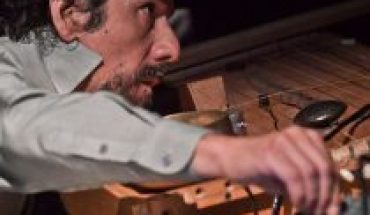Argentines are of countries that consume more meat, and this is not news. According to the Council of the Institute of promotion of the vaccine Argentina meat (IPCVA), we consume average 57 kilograms of beef per person, for a total of 120 kilos, including chicken and pork. This is twice as much as most of the developed countries.
is logical. If we ask ourselves what dishes us back to our childhood, or what food we eat when we get together, the majority of responses include: breaded with mashed at the de la abuela, roasted Sunday with family, Empanadas stuffed with meat in coupled, chori and burgers on the Court, and so. Until the stew of lentils, the carbonada, locro, everything! However, very few people wondered what all that has to happen to get a cow to your plate a bife de chorizo. Or perhaps if they ask him, but he gives them printing or “thing”, then better think otherwise and eat. To deal with this situation and begin to understand a little more about what we eat when we eat a steak, we went to a kind of cutting in charge of Hernán Méndez, butcher responsible for the carnage Piaf in Colegiales. Despostar is basically disassembling the medium res and transform it into cuts that all we know, and is handmade and methodical work that all butchers make the morning comes when the refrigerator truck. May it sound counterproductive, see the raw whole cow and then better appreciate the implication that we eat in the roast? Yes, exactly that. Some here are phrases of Mendez that made us reflect and understand why go to a kind of cutting is a before and after in your experience as “carnivorous animal” (and not going to do that you stop eating meat, but quite the opposite) : “The medium res is a gastronomic product, because it is now the dishes that make up our gastronomy and national identity” every cut of meat is a muscle, not something that cow creates for you eat. The butcher is transforming it into food. For example: the implication is the diaphragm, the cow has to live, so it is important to know what went before and understand so cooking and care needs. Think of each cut with care and attention made that we respect it more.” If only as involved we are in trouble, because it is a 0.3 cow. You have to know it to take advantage of it all and be better consumers, buy better”If a single butcher sold there, and a couple of more cuts, the rest of the cow is wasted. It is important to be open and receptive to trying new cuts, change, so nothing is wasted. Mendez also has that this applies to restaurants: “here comes Tegui to buy chicken skin. It is good that these parts (less used) be revalued is made, that helps to keep the system alive””the craft of the butcher has a cultural role, our cutting has a path”this is important to understand that our cuts of meat make up our identity Gourmet. The cow is the same here and in the United States, and China. However, the courts are different, are called otherwise, used for other things. This is because the Argentine food has a style, marked by influences and own uses, which we mark as a culture. And that food, need for cuts of meat that we know: Roast Strip for example, is our thing.
Tasting workshop is open, interactive and limited vacancies. It is a super experience recommended to start to eat and buy with greater awareness. They learn through the carnage Piaf Instagram.
translated from Spanish: Why see a butcher working closely makes the entraña still richer
April 3, 2019 |





